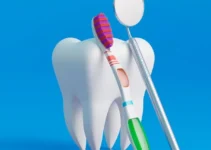Complete oral rehabilitation encompasses a comprehensive approach to restoring both the aesthetics and functionality of your smile. This process often involves various dental procedures such as implants, crowns, bridges, or dentures, tailored to address individual needs. For those suffering from extensive dental issues, this rehabilitation can significantly improve oral health, boost confidence, and enhance quality of life. Understanding the specific treatments and their benefits can help patients make informed decisions about their dental care journey.
Benefits of Complete Oral Rehabilitation
Complete oral rehabilitation offers a comprehensive solution to restore the health, function, and appearance of your teeth. This holistic approach addresses a variety of dental issues, from missing teeth to gum disease, ensuring that you regain both the functionality and aesthetics of a natural, healthy smile. Oral rehabilitation typically involves a series of procedures including dental implants, crowns, bridges, and sometimes even reconstructive surgery.
One of the primary aims of complete oral rehabilitation is to improve the overall quality of life for patients. By addressing multiple dental issues at once, this approach can save time and reduce the number of dental visits required. Additionally, it ensures that all treatments are synchronized for optimal results. Patients who undergo oral rehabilitation often report significant improvements in their daily activities, including eating, speaking, and social interactions.
Moreover, complete oral rehabilitation takes into consideration the patient’s long-term oral health. Using advanced materials and techniques, modern dentistry can offer durable solutions that last for many years. This focus on sustainability not only enhances the patient’s immediate experience but also minimizes the need for future dental interventions.
Enhanced Aesthetics
One of the most noticeable benefits of complete oral rehabilitation is the enhancement of your smile’s aesthetics. Cosmetic improvements can have a profound impact on a person’s self-esteem and social interactions. Procedures like teeth whitening, veneers, and orthodontics are often part of the rehabilitation plan to ensure that your smile looks as good as it functions.
A well-executed oral rehabilitation can correct issues such as crooked or misaligned teeth, gaps, and discoloration. Modern dental materials such as porcelain and composite resins are used to provide a natural, lifelike appearance, making it almost impossible to distinguish between natural teeth and dental restorations.
These aesthetic improvements are not just skin deep. Healthy-looking teeth often indicate good oral health, which can have positive effects on your overall well-being. Studies have shown that people with attractive smiles are often perceived as more confident, approachable, and successful.
Improved Functionality
Beyond aesthetics, complete oral rehabilitation significantly improves the functionality of your teeth. Missing or damaged teeth can severely affect your ability to chew and speak, leading to nutritional deficiencies and social awkwardness. Dental implants, crowns, and bridges restore these essential functions, allowing you to enjoy your favorite foods and converse confidently.
Improved dental functionality also contributes to better oral health overall. For instance, replacing missing teeth prevents the adjacent teeth from shifting, which can lead to misalignment and bite issues. Additionally, restored teeth help maintain the structure of your jawbone, preventing bone loss and facial sagging.
In the long run, restored functionality can help you avoid a host of other health issues. Properly aligned teeth and jaws can reduce the risk of temporomandibular joint disorder (TMD) and other complications, making complete oral rehabilitation a wise investment in your long-term health.
Boosted Confidence
The psychological benefits of complete oral rehabilitation cannot be underestimated. A beautiful smile can significantly boost your confidence, leading to improved social and professional interactions. Many patients report feeling more outgoing and enthusiastic about their daily lives after undergoing comprehensive dental treatment.
Increased confidence often leads to a more active lifestyle. People who are confident in their smiles are more likely to engage in social activities, pursue job opportunities, and even take better care of their overall health. Self-assured individuals often inspire confidence in others, creating a positive feedback loop that benefits both personal and professional relationships.
Lastly, the confidence gained from complete oral rehabilitation can have lasting effects on your mental well-being. The reduction of anxiety and embarrassment associated with dental issues allows you to focus on what’s important in life, from personal endeavors to professional achievements.
If you found this article helpful, be sure to check out our other articles on the latest advancements in dental technology and patient care. Stay informed and take the first step towards a healthier, more confident smile today.
Types of Complete Oral Rehabilitation
Complete oral rehabilitation encompasses various techniques and procedures aimed at restoring the full functionality and aesthetics of the oral cavity. Primarily, these methods can be classified into _fixed_ and _removable_ solutions. Fixed solutions include dental implants, crowns, and bridges, while removable options involve dentures and overdentures. Understanding the differences and applications of these methods is crucial for providing optimal care to patients.
Fixed Solutions: Fixed solutions are designed to remain permanently in the mouth. Dental implants are one of the most popular fixed solutions, providing a strong foundation for replacing missing teeth. Implants are surgically placed into the jawbone and allowed to osseointegrate—a process where the bone grows around the implant, securing it in place. Crowns and bridges serve to restore the function and appearance of damaged or missing teeth. Crowns are used to cover and protect a single damaged tooth, while bridges can replace one or more missing teeth, with the support of adjacent natural teeth or implants.
- Dental Implants: Titanium posts surgically placed in the jawbone, offering a permanent solution for missing teeth.
- Crowns: Caps that cover damaged teeth, restoring shape and functionality.
- Bridges: Prosthetic teeth anchored by adjacent natural teeth or implants, filling the gap of missing teeth.
Removable Solutions: Removable dental prosthetics are designed for patients who require a more flexible solution or those who may not be candidates for fixed methods. Complete or partial dentures are customized to fit the patient’s mouth and can replace all or some missing teeth. Overdentures are another form of removable prosthesis that use dental implants for added stability but can still be removed by the patient for cleaning and maintenance.
- Dentures: Full or partial prosthetic devices that replace missing teeth and can be easily removed for cleaning.
- Overdentures: Similar to traditional dentures but supported by implants, offering more stability.
Both fixed and removable solutions are integral tools in the realm of complete oral rehabilitation. Each method has its own set of advantages and limitations, and the best choice depends on factors such as patient health, bone density, and personal preferences. A thorough consultation with a dental specialist can help determine the most appropriate treatment plan tailored to the individual needs of the patient.
To further understand the various methods and advancements in complete oral rehabilitation, we encourage you to explore our other articles for more in-depth information. These resources can provide additional insights into the latest innovations and best practices in dental care.
The Complete Oral Rehabilitation Process
Oral rehabilitation is more than just fixing a single tooth. It’s a comprehensive approach to restoring the appearance, function, and health of the entire mouth. This process can address multiple issues such as missing teeth, damaged enamel, and bone loss.
Dental implants and bone regeneration play a pivotal role in this process, offering a durable and natural-looking solution for tooth loss. The journey to a completely restored smile involves several critical phases, each fundamental to the success of the treatment.
This article will guide you through the intricacies of the complete oral rehabilitation process, highlighting the essential steps involved, from the initial consultation to the final follow-up and maintenance care.
Initial Consultation
The initial consultation is the cornerstone of any successful oral rehabilitation process. During this stage, the dentist conducts a thorough examination to assess the patient’s oral health. This typically involves diagnostic procedures such as X-rays, CT scans, and intraoral photographs. These imaging techniques help to visualize bone structure, gum health, and the placement of existing teeth.
During the consultation, it’s crucial for the patient to communicate all concerns and expectations. A comprehensive dental history is taken to identify any pre-existing conditions that may affect treatment. This is also the time to discuss various treatment options and their associated risks and benefits.
Patient education is essential at this stage. The dentist will explain the entire rehabilitation process, including the types of implants and bone grafting materials that may be used. The goal is to ensure that the patient is fully informed and comfortable with the proposed treatment plan.
Treatment Planning
After the initial consultation, a detailed treatment plan is developed. This plan is customized to meet the specific needs of the patient. It includes detailed steps, timelines, and the estimated costs of the procedures involved. A well-structured treatment plan ensures that every aspect of the rehabilitation is considered, reducing the risk of complications.
The treatment plan often involves several stages. For patients with significant bone loss, bone regeneration procedures are scheduled before the placement of dental implants. These procedures may include bone grafts, sinus lifts, or the use of bone growth factors to stimulate natural bone regeneration.
Once the bone structure is adequate, the placement of dental implants is scheduled. This surgical procedure involves inserting titanium screws into the jawbone, which serve as the foundation for the artificial teeth. The plan will also outline any additional cosmetic procedures that may be needed to achieve a natural and aesthetically pleasing outcome.
Every treatment plan is unique and requires the collaboration of various dental specialists. This interdisciplinary approach ensures that all aspects of oral health are addressed, providing a holistic solution to complex dental issues.
Follow-Up and Maintenance
The follow-up and maintenance phase is crucial for the long-term success of the oral rehabilitation process. Regular follow-up appointments are scheduled to monitor the healing process and to ensure that the implants are integrating well with the bone.
During these visits, the dentist will assess the stability of the implants and address any issues that may arise. It’s also a time for professional cleanings to maintain oral hygiene and prevent infections. The patient will be educated on proper care techniques to ensure the longevity of the implants and overall oral health. Maintenance is an ongoing process. Patients are encouraged to adopt a diligent oral hygiene routine, including regular brushing, flossing, and the use of antiseptic mouthwash. A nutritious diet that supports bone health is also recommended.
Long-term success requires a partnership between the dentist and the patient. Regular dental check-ups and a proactive approach to oral care will help maintain the outcomes of the rehabilitation process, ensuring a healthy, functional, and aesthetically pleasing smile for years to come.
To delve deeper into the fascinating world of dental implants and oral health, make sure to explore our other articles. We cover a wide range of topics that can help you understand the latest advancements in dental care.
Who is a Candidate for Complete Oral Rehabilitation?
Complete oral rehabilitation is a comprehensive dental treatment approach aimed at restoring the function, aesthetics, and health of the entire mouth. This treatment plan is ideal for individuals who require extensive dental work to address complex oral issues. Candidates for complete oral rehabilitation often include those with multiple dental concerns that significantly affect their quality of life.
Understanding who might benefit from this holistic approach is crucial for both patients and practitioners. Individuals dealing with a combination of dental problems that go beyond simple fillings or routine cleanings are prime candidates. This extensive treatment plan is typically recommended after a thorough evaluation by a specialist in implantology and regenerative dentistry.
Complete oral rehabilitation involves a customized treatment plan tailored to the patient’s specific needs. This plan may include a variety of dental procedures such as dental implants, bone grafting, veneers, crowns, and orthodontics. By addressing multiple dental issues through a cohesive treatment strategy, patients can achieve optimal oral health and regain their confidence.
Patients with Multiple Dental Issues
Patients with multiple dental issues often find themselves in a cycle of recurring dental problems. Common issues that these patients face include missing teeth, severe tooth decay, periodontal disease, and malocclusion. These issues not only affect their oral health but also have a profound impact on their overall well-being and self-esteem.
For such patients, piecemeal treatments often fall short. Complete oral rehabilitation is designed to address all these issues simultaneously, providing a comprehensive and long-lasting solution. By tackling multiple problems at once, the treatment plan can help to restore both the function and appearance of the patient’s mouth.
Studies have shown that patients who undergo complete oral rehabilitation experience significant improvements in their oral function, aesthetics, and quality of life. This holistic approach ensures that all underlying issues are addressed, reducing the likelihood of future complications and promoting sustainable oral health.
Those Seeking Comprehensive Solutions
Individuals seeking comprehensive solutions for their oral health problems often turn to complete oral rehabilitation. This approach is ideal for those who have undergone previous dental treatments that have failed or those who have refrained from seeking dental care due to fear or financial constraints. Complete oral rehabilitation offers a fresh start, allowing patients to address all their dental issues in a structured and efficient manner. Patients who desire a holistic, long-term solution to their dental problems find complete oral rehabilitation particularly beneficial. This treatment plan is not just about fixing what is broken but also about restoring oral health to its optimal state. By doing so, patients can enjoy the benefits of a healthy, functional, and aesthetically pleasing smile.
Moreover, complete oral rehabilitation is tailored to meet each patient’s unique needs. This personalized approach ensures that the treatment is both effective and efficient, addressing all aspects of oral health. Whether it involves dental implants, bone grafts, or other advanced procedures, the goal is to achieve a harmonious and sustainable improvement in the patient’s oral health.
If you or someone you know is struggling with multiple dental issues or seeking a comprehensive solution, it may be time to consider complete oral rehabilitation. This transformative approach can help to restore not only your oral health but also your confidence and quality of life. For more insights and information on dental health, explore our other articles.
Complete Oral Rehabilitation: Key Questions Answered
Get informed on how complete oral rehabilitation can not just transform your smile, but also enhance your overall quality of life. Here’s a crucial question you might have:
What exactly is complete oral rehabilitation?
Complete oral rehabilitation involves a comprehensive set of dental procedures designed to completely restore the function and aesthetics of your mouth. This may include a combination of dental treatments such as fillings, crowns, bridges, implants, and veneers, as well as more complex procedures like bone grafts and gum surgery. The goal is to address various dental issues at once, ranging from tooth decay, gum disease, tooth loss, and alignment issues, to severe wear and damage, thereby significantly improving both oral health and appearance.

My name is Salman Kapa, a 73-year-old expert in bone regeneration and dental implantology. With decades of experience in the field, I am dedicated to advancing our understanding of oral health and hygiene. Through my research and writing, I aim to contribute to the development of innovative solutions in dental care.




